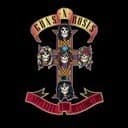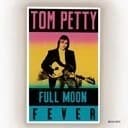The A Major Pentatonic scale represents one of the most guitar-friendly scales in popular music, thanks to the open A string providing a natural root note anchor point for both acoustic and electric players. Its construction follows the universal major pentatonic formula: root, major second, major third, perfect fifth, and major sixth. This interval selection creates a scale that sounds consonant over virtually any chord in the key of A major, making it an essential tool for beginners learning improvisation and seasoned professionals crafting memorable solos. The scale's five-note structure also appears prominently in traditional music from cultures around the world, demonstrating its fundamental appeal to the human ear.
Scale Construction and Interval Structure
Built on the interval pattern of whole step, whole step, minor third, whole step, minor third (W-W-m3-W-m3), the A Major Pentatonic scale moves from A (root) to B (major second) to C♯ (major third) to E (perfect fifth) to F♯ (major sixth) before returning to the octave. This pattern omits the fourth degree (D) and seventh degree (G♯) found in the standard A Major scale, creating what music theorists call a "gapped scale." The gaps eliminate the strongest tendency tones - notes that create harmonic tension requiring resolution - resulting in a scale where every note feels stable and melodically complete. Understanding this architecture allows musicians to apply the same pattern to create major pentatonic scales in any key.
Harmonic Applications and Chord Relationships
The A Major Pentatonic scale functions beautifully over the most common chord progressions in A major, including the classic I-IV-V progression (A-D-E), the modern pop vi-IV-I-V pattern (F♯m-D-A-E), and countless other combinations. Each note of the scale belongs to multiple chords within the key: A and C♯ appear in the A major chord, B and E form part of the E major chord, while F♯ and A connect to the F♯ minor chord. This harmonic compatibility makes the scale particularly effective for melodic embellishment, guitar fills between vocal phrases, and extended improvisational passages in live performance settings.
Performance Techniques and Practice Strategies
For pianists, the A Major Pentatonic scale offers comfortable fingering patterns that work well for both hands, with a typical right-hand pattern using 1-2-3-4-5 (thumb on A, index on B, middle on C♯, ring on E, pinky on F♯). Guitarists benefit from the open A string resonance, with the most common box pattern position starting at the 5th fret of the low E string. Effective practice involves more than simply running up and down the scale - musicians should explore rhythmic variations, melodic sequences (such as playing in thirds or fourths), and phrase-ending techniques that create musical statements rather than exercises. Recording yourself improvising over backing tracks in A major helps develop the ear-to-finger connection essential for spontaneous musical expression.
Connection to F♯ Minor Pentatonic
The relationship between A Major Pentatonic and F♯ Minor Pentatonic provides musicians with powerful creative flexibility, as both scales contain identical notes (A, B, C♯, E, F♯) but emphasize different tonal centers. When playing over an A major chord, these notes create a bright, optimistic sound; when the same notes are played over an F♯ minor chord, they take on a more introspective, emotional quality. Many legendary guitar solos in rock and blues exploit this duality, seamlessly shifting between major and minor pentatonic flavors to create dynamic contrast and emotional depth. Mastering both perspectives of the same five notes exponentially increases improvisational vocabulary without requiring additional scale memorization.





